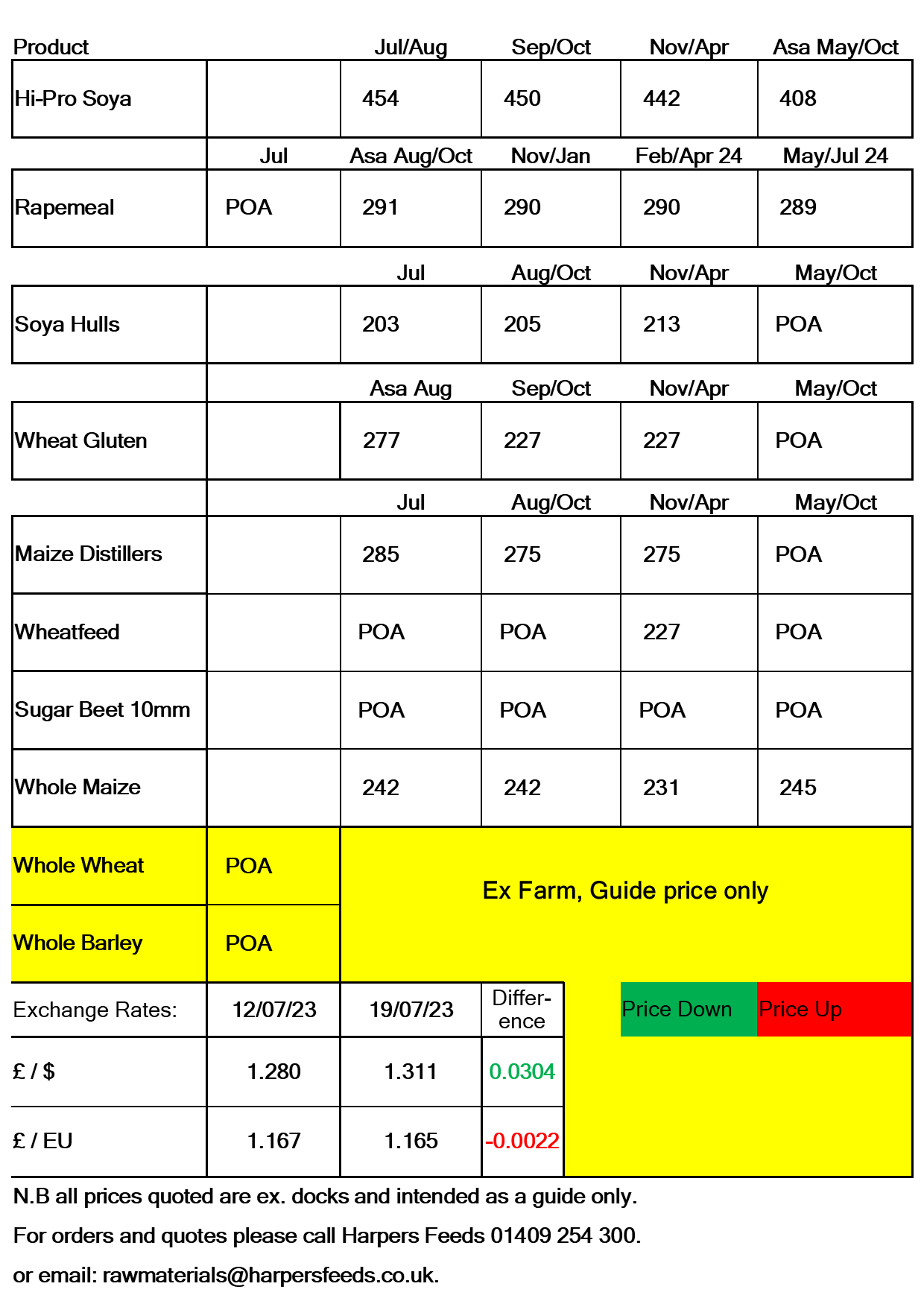Market Overview
Russia refuse to agree renewal of the Black Sea Grain corridor.
The deal which expired on Monday evening allowed Ukraine to export grains and other commodities through the Black Sea safely.
Ukraine is a major supplier of key crops in the world market. In 2021/2022 Ukraine supplied 46% of Global exports of Sunflower Oil, 17% of Barley, 12% of Maize and 9% of Wheat.
For the 2023/2024 season, Ukraine were estimated to produce 25MT of Maize and export 19.5MT. They were also expected to produce 17.5MT of Wheat and 4.8MT of Barley.
However, we do not anticipate markets to react as severely as last year as alternate ways of exporting Ukraine grain by land and train have been established. Production and exports by Ukraine for products such as Wheat and Maize have also decreased over the last 12 months and been factored into the market.
The original Export Agreement stopped Russian forces from attacking ports along the coast of Ukraine, especially Odessa . Since the agreement expired, Russia has been targeting storage units, loading equipment and access routes in Ukraine ports with missiles and drones.
Weather conditions in the US will be a key watchpoint for grains with forecasts showing extreme heat conditions in the western half of the key producing areas. Having already suffered drought conditions at the end of June, more extreme heat could cause damage to yields and crop conditions.
Harvest 2023 has got off to a shaky start due to the wet conditions seen in the UK. According to ‘COCERAL’ the EU-27 UK 2023 Barley production forecast is at 56.6MT, down from 59.3MT seen in 2022. Yields in the UK have been variable. This is dues to drought conditions seen in Spain, Sweden and Denmark.
For Maize, the impact of the grain deal falling through and the current US weather conditions will be influential to market direction. More poor weather could lead to further cuts to US yields.
Prices for Hi Pro Soya have been given support recently with the market focusing on the recent reduction on US Soybean yields and a 4M acre reduction in planted area. July’s WASDE report saw US soybean production lowered by 5.7MT due to the cut in planted area.
Chinese demand for Soybeans will be a watchpoint going forward as reports suggest they will look to Brazil’s bumper crop for imports. Imports for June have been substantially lower than numbers seen in May.
Support for Soybean markets have fed into rapeseed prices, with concerns over dryness in Canada also lending support. EU weather will also be a market driver and the loss of the grain corridor could also impact global Rapemeal prices.







